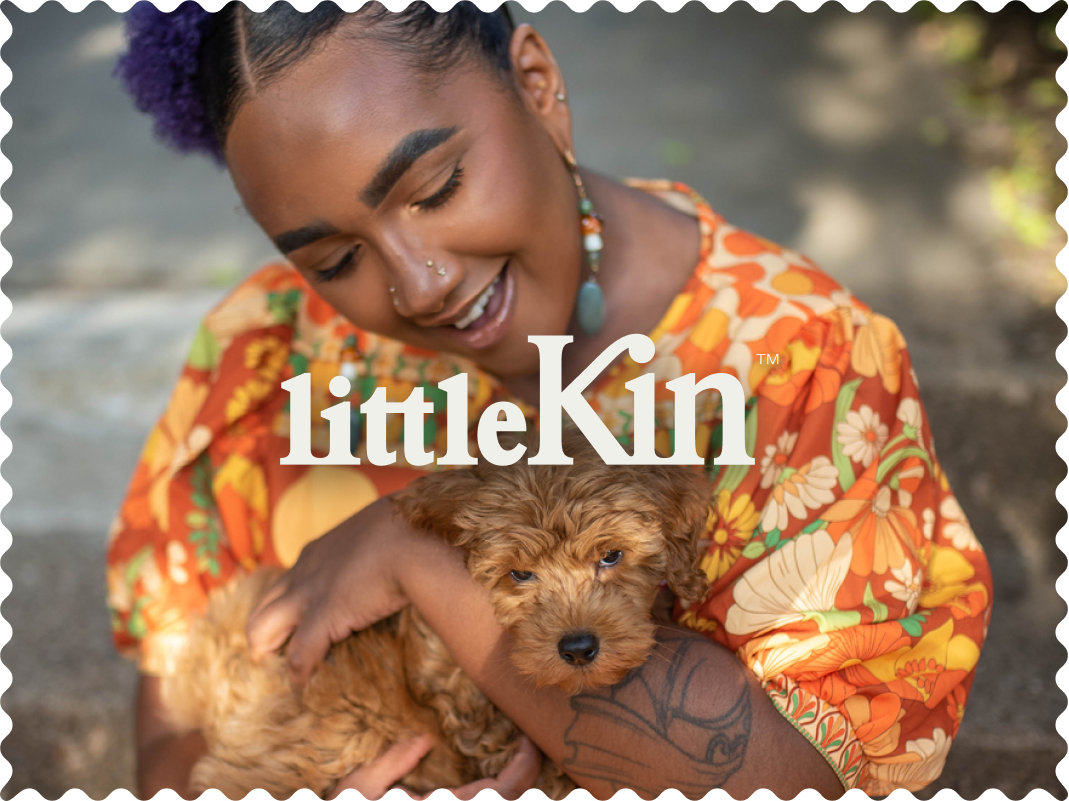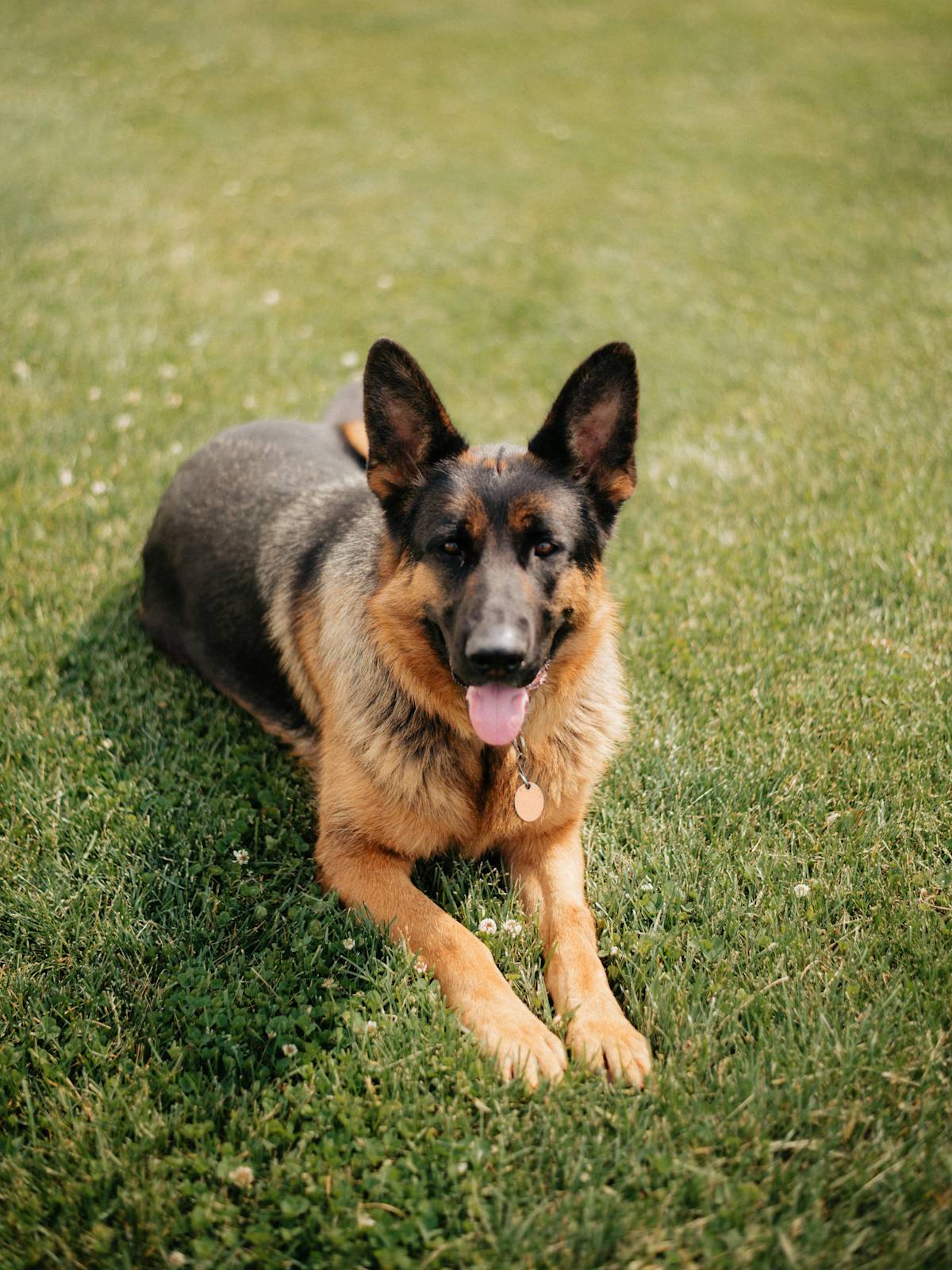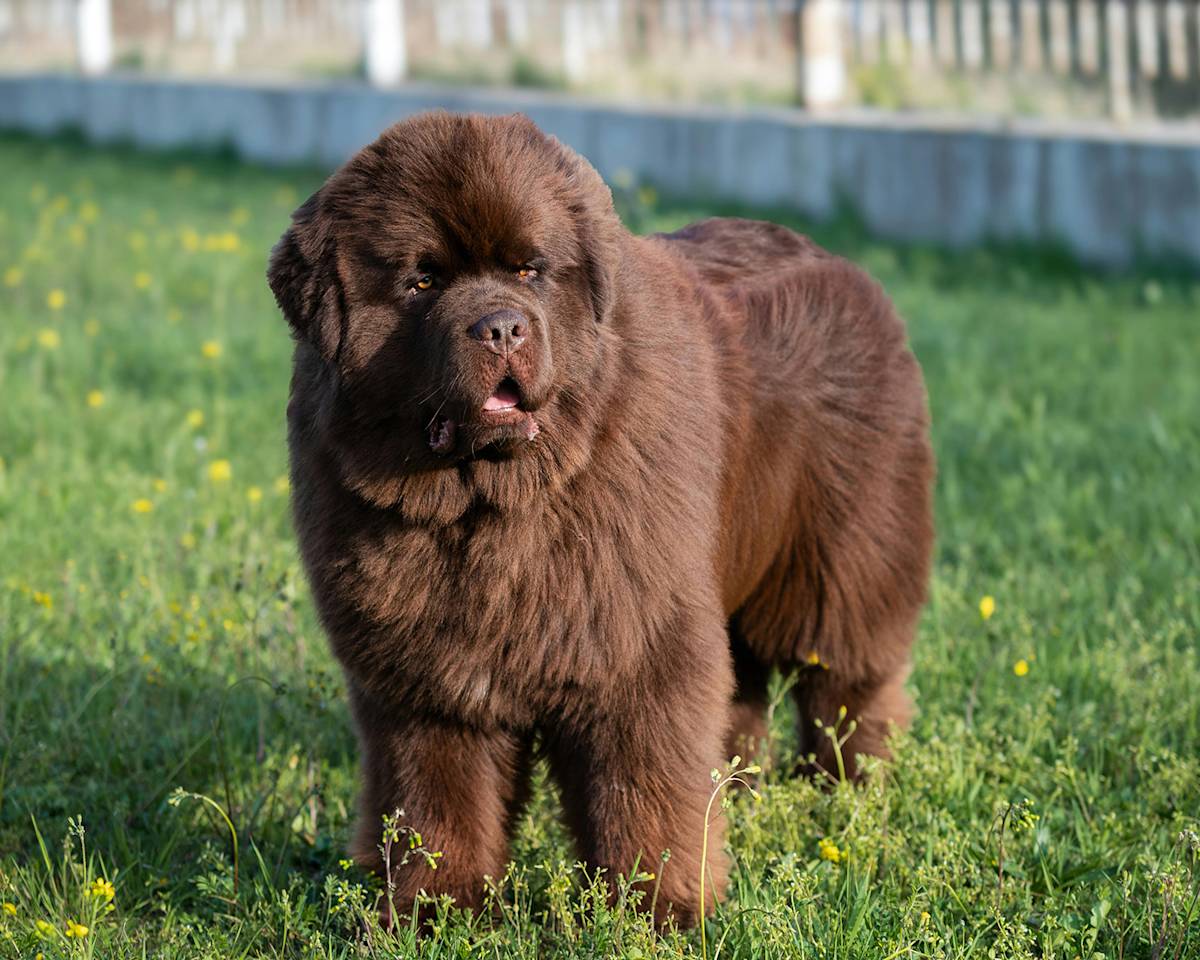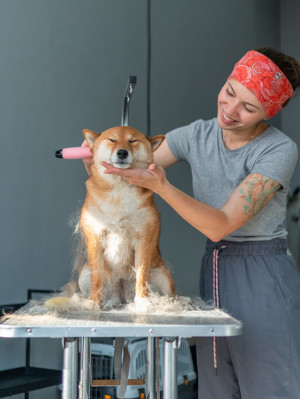Why You Should Never Shave Your Double-Coated Dog (And What to Do Instead)
Keep your pup’s coat health all year round
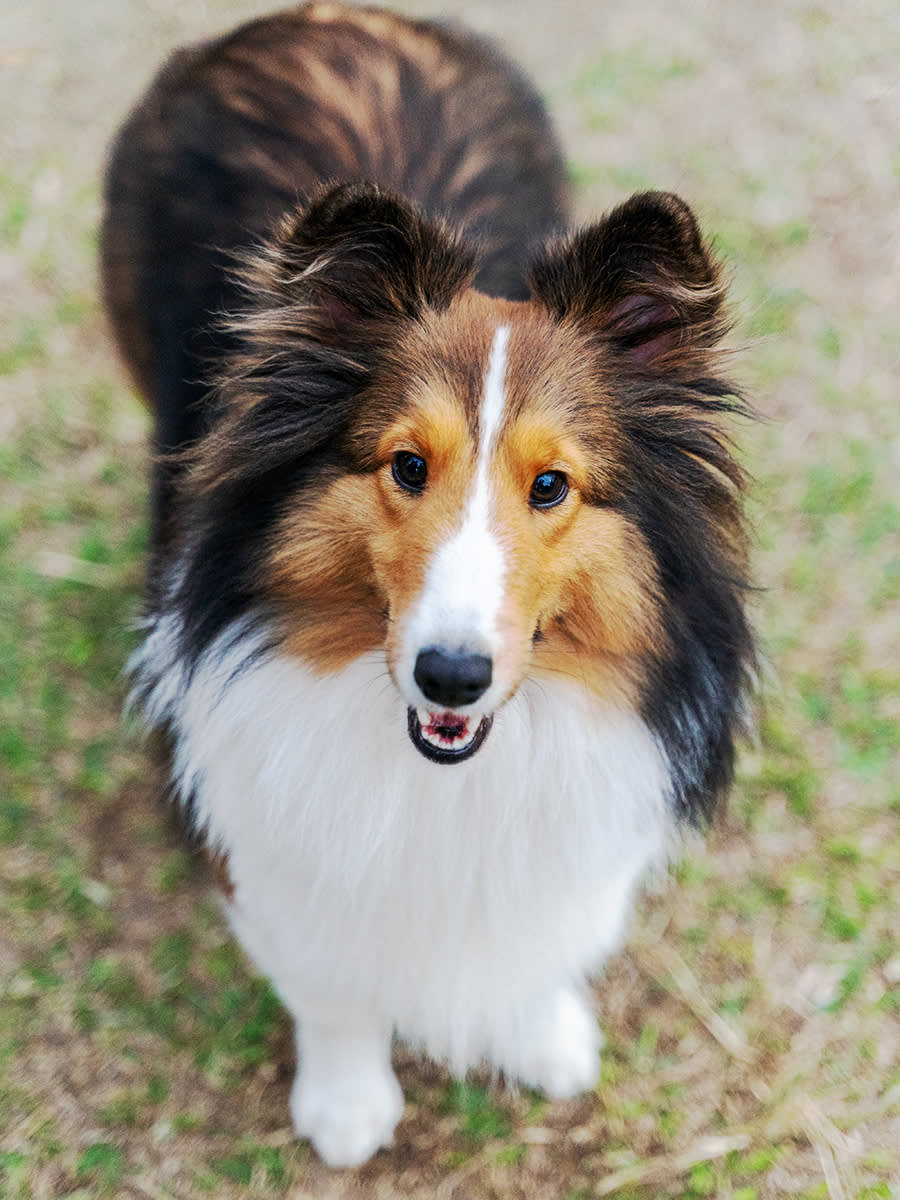
Share Article
Summer in the UK can be famously unpredictable — one minute we’re basking in 30C sunshine, the next we’re sprinting for cover from a sudden downpour. Many of us adjust with seasonal wardrobes or by swapping thick duvets for lighter ones. But what about our loyal canine companions, who don’t get to choose their coats?
Our favourite breeds come in all textures: short, long, curly, smooth, silky, frizzy, thick… the list goes on. Among them, one particular coat type – the double coat – deserves a little more understanding. These unique, multi-layered coats are nature’s way of protecting dogs from both cold and heat, but they require very specific care compared to single-coated breeds.
Here’s everything you need to know about what a double coat actually is, how to tell if your dog has one, the science behind how it works, and the best grooming advice to keep your pup healthy, happy, and, of course, seasonally stylish.
What is a dog double coat?
When it comes to grooming and caring for your dog, it’s important to understand what having a ‘double coat’ means and why it is so important. Whether you are a first-time dog parent or a seasoned pro, knowing how a double coat works can make a big difference in keeping your dog comfortable, healthy and looking their best.
How does a double coat work?
The double-coated dog has its own built in Climate Control System. So what’s the science? Evolution has adapted our dogs to be able to regulate their body temperature in extreme climates through the following means:
Thermoregulation: their undercoat traps air and acts as a natural insulator. In winter keeping warmth in and in summer blocking external heat by allowing airflow close to the skin. The topcoat also protects from UV rays and sunburn.
Photoprotection: the topcoat (also known as outer coat or guard hairs) protect the skin from harmful ultraviolet radiation and acts like a sun-reflective barrier.
Hydrophobic barrier: many breeds also have a water-resistant topcoat, which keeps the skin dry during rain or snow. This especially evolved in breeds developed for cold or wet environments.
Seasonal shedding (moulting): double coated dogs ‘blow’ their coats twice a year typically in spring and autumn. This happens as a response to the change in daylight hours, which then prepares them for the change in temperatures.
How to tell if your dog has a double coat
A single-coated dog has only one layer of fur, typically either soft and short or long and silky. Imagine a single, smooth layer of hair growing evenly from the skin, much like our hair. It lies close to the skin and doesn’t fluff up or separate into layers. Their coats are generally easier to manage, produce less shedding (great for your vacuum cleaner) and grow at a more even rate. Think Poodle, Boxer, Greyhound and Yorkshire Terrier.
A double coat refers to two layers of fur that grow simultaneously on a dog’s body. The easiest way to tell what type of coat your dog has is to part the fur and examine the layers. Gently part the dog’s fur down to the skin in areas where it’s thickest (usually the shoulders, rump or back of the neck). If they have a double coat you will see two distinct layers: a dense soft undercoat almost like fleece, close to the skin and a longer coarser topcoat above it.
Undercoat: this is the soft, dense and short layer of fur that lies close to the skin and its primary job is to insulate – keeping the dog warm in the winter and cool in the summer by regulating body temperature.
Topcoat: also known as guard hairs, these are longer coarser hairs that protect the undercoat and skin from dirt, moisture and harmful UV rays. The topcoat also gives the dog its distinctive colour and texture. When parting the fur you will see a dense fuzzy base layer beneath longer, straighter hairs. Imagine wearing a thick woolly sweater (undercoat) underneath a weatherproof jacket (topcoat). Many of our popular dog breeds have double coats, particularly those bred for cold climates or active outdoor work. Think German Shepherds, Golden Retrievers and Border Collies.
Texture can vary with breeds (eg, wiry in Terriers, curly in Poodles and silky in Spaniels). You can also try running your fingers against the growth of the fur and if you feel resistance it means they have a double coat.
Observing the shedding patterns can also be helpful. If they have heavy seasonal shedding, especially in spring and autumn, then they are likely double coated. If they have light consistent shedding all year they are likely single coated.
Dog breeds with double coats
Many of our favourite breeds here in the UK have a double coat:
Pomeranian – fluffy with a thick undercoat with a harsh outercoat.
Pekingese – long topcoat hiding a dense undercoat.
Shetland Sheepdog – dense, woolly undercoat with a long topcoat.
Corgi – thick undercoat with a weather resistant topcoat.
Golden Retriever – dense soft undercoat with a water resistant topcoat.
Labrador – insulating undercoat with a short, coarse topcoat.
German Shepherd – thick undercoat and coarse outercoat.
Bernese Mountain Dog – dense undercoat with a long silky topcoat.
Newfoundland – dense undercoat with a waterproof oily topcoat.
Border Collie – soft undercoat with a long topcoat.
Are Labradors double coated?
Yes, Labradors are known for their short, dense and insulating double coat. Their topcoat is water-resistant – a key trait for a breed originally developed to retrieve game from icy waters.
Is a Cockapoo double coated?
Despite popular belief the answer is typically no, they are usually single coated especially if they inherit more of the Poodle’s genes. Their coat types can vary, however, depending on which parent they take after.
Other popular UK breeds and their coat types
Boxer – single coat (smooth)
Poodle – single coat (curly)
Yorkshire Terrier – single coat (long, silky)
Caring for your double-coated dog
The key to managing a double coat is regular brushing, especially through peak shedding times. Professional dog groomer Nicky Johnsonopens in new tab explains, “Double-coated dogs require regular brushing, bathing and potentially professional grooming to manage their undercoat and prevent matting.”
Brushing should be done weekly, increasing to daily when needed. Nicky encourages the use of a slicker brush and undercoat rake: “The different brush types will ensure you get down to the roots and work the loose undercoat up to the top.”
“Common areas that are prone to matting are legs, chest, neck, behind the ears and bottom. It is always advisable to find an experienced groomer who can use the right equipment to thin out the dead undercoat without causing any damage,” says Nicky. “Drying is essential, too, to stop bacteria growth and skin issues such as hotspots.”
She also stresses the importance of using cold air rather than hot, “using a blaster without heat is vital to avoid overheating a dog, especially the very hairy breeds like a Newfoundland or Bernese Mountain dog. Using the blaster in the direction of the fur will stop matting. I encourage my clients to blast once a week even if not wet to remove dead skin, dirt and to give their skin a general inspection.”
Nicky explains that, “keeping the fur between their toes trimmed short will stop matts and allow you to see any foreign bodies going into the toes like a grass seed.” Ticks also love to hide in thick coats so checking your dog after every walk is vital. Nicky encourages pup parents of double-coated dogs to book in for a professional groom every eight weeks to help stay on top of the matts.
Can you shave a dog with a double coat?
“One of the most common grooming mistakes with double-coated dogs is shaving them,“ says Nicky. It may seem like the quickest option, however it can actually do more damage to the coat then you think. If we were to remove both layers through clipping, it would eliminate their natural protection and disrupt their temperature regulation. It would also expose their skin to sunburn, heat-stroke and other irritations. Nicky says “a double-coated dog should only be clipped if matted or for medical/surgical reasons”. If it is hot and you are worried about them over-heating, always make sure you provide shade, fresh water and cool airflow if possible.
Common double-coat myths debunked
Shaving keeps dogs cooler: myth. The undercoat actually helps to keep the dog cool by shielding the skin from hot-air and sunlight.
Double coats are harder to maintain: it depends. If you can regularly put the time aside to groom your dog and then use the help of a professional groomer during the peak shedding times of spring and autumn, it can really help you and your hoover.
All fluffy dogs have double coats: myth. Fluffiness doesn’t necessarily mean they have a double coat. Some fluffy dog breeds such as Poodles and Bichon Frisé are single coated.
Understanding and respecting your dog’s double coat is essential for their health and well-being. With proper care, this unique feature not only keeps your pet protected year-round but also enhances their natural beauty. So put down the clippers and pick up a brush – your double-coated dog will thank you for it.
The bottom line: dog double coats
Understanding your dog’s double coat is key to keeping them comfortable, healthy and well-groomed year-round. These clever two-layered coats aren’t just about fluff – they’re nature’s way of protecting your dog from heat, cold and the elements. With the right care (and no shaving!), you’ll help your pup stay cool in summer, warm in winter, and looking their absolute best.
Frequently asked questions: dog double coats
Can you shave a dog with a double coat in summer?
As tempting as it is, please avoid shaving your dog in the summer, as shaving can do more harm than good.
How often should you brush a double-coated dog?
Ideally weekly but increasing to daily during the ‘blow out’ seasons of spring and autumn.
Do double-coated dogs shed more than single-coated dogs?
Double-coated dogs will seasonally shed more during spring and autumn, unlike single-coated dogs who will shed lightly throughout the year.
What happens if you shave a double-coated dog?
Shaving can damage the coat permanently, cause the dog to overheat and put them at risk of sunburn.
Are German Shepherds double coated?
Yes, German Shepherds have a dense double coat consisting of a soft undercoat and a coarse outer layer.
How long does it take for a double coat to grow back?
It can take three to six months or longer for a double coat to grow back fully – and sometimes it never grows back the same, especially after shaving.
Do double-coated dogs need special shampoo?
Yes, they can benefit from deshedding or coat-specific shampoos that support undercoat removal and skin health. Ensure you only bath every few months to avoid stripping their natural coat oils.
Can you use a regular brush on a double-coated dog?
It’s best to use specialised tools like undercoat rakes or slicker brushes as they are much more effective at reaching through both layers.

Zoe Blake RVN, ISFMCertFN / AdvCertFB, MISAP
Zoe is a registered veterinary nurse and has been in the profession for over 30 years. She enjoys educating pet owners on all aspects of their care and regularly writes to support her work. When she is not chatting animals, she can be found running around the tennis court or exploring the countryside with her rescue dog, Dylan.
Related articles
![woman with a bison friese and corgi, vacuuming the white dog on her lap]()
Should I Err... Vacuum My Pet?
Just because you can, does it mean you should?
![greyhound dog being washed in tub]()
Lather, Rinse, Repeat: the Ultimate Dog Grooming Guide
Keep your dog well-groomed but trust trims to the pros
How Often Should You Groom Your Dog?
Just make sure you spell out ‘B-A-T-H’
![Woman carefully cleaning a dog in a bathtub.]()
How to Groom Your Dog at Home: the Complete Guide
Spa days can happen at home
![]()
7 Eco-Friendly Pet Grooming Products
Package-free brushes, plant-based wipes, organic shampoos and more
